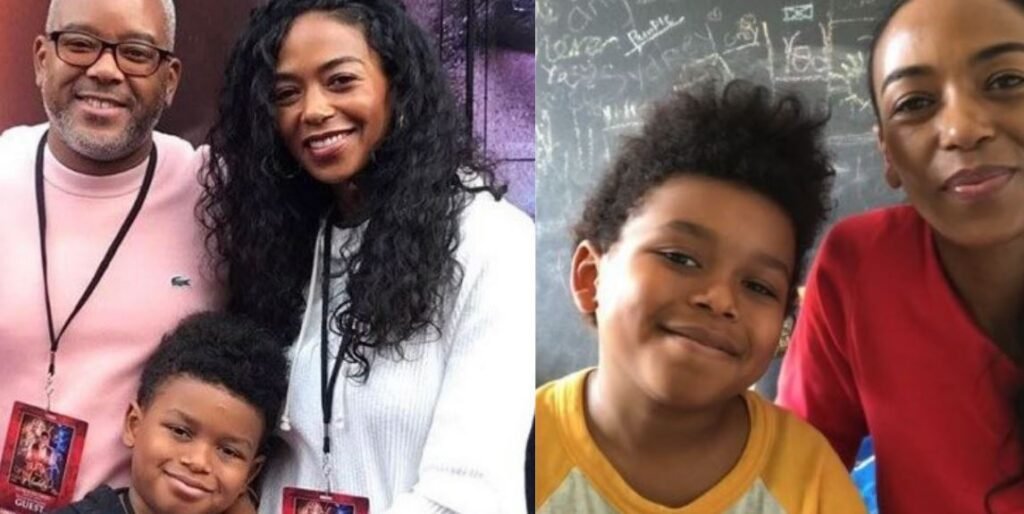
Langston Lewis-Smith found himself clutching a graduation certificate and the weight of a significant loss on a day intended to commemorate academic accomplishment. Just as he crossed the stage to graduate from middle school on June 11, 2025, his mother, Ananda Lewis, died in hospice care. His rite of passage was transformed into a bittersweet moment by the timing, which was remarkably symbolic and highlighted the difficulties of maturing gracefully under emotional strain.
Raised with a quiet dignity, Langston is the son of renowned broadcast journalist and former MTV VJ Ananda Lewis. Langston is linked to a family tree steeped in entertainment and public service through his father, Harry Smith, who is not only a well-known media personality but also the brother of celebrated actor Will Smith. But his identity as a son first—one who grew up taking strength from a mother whose charisma once lit up television screens across the nation—has never been overshadowed by this connection.
Simple WordPress-Friendly Table:
| Detail | Information |
|---|---|
| Name | Langston Lewis-Smith |
| Year of Birth | 2011 |
| Mother | Ananda Lewis |
| Father | Harry Smith (brother of Will Smith) |
| Graduation Date | June 11, 2025 |
| Mother’s Passing | June 11, 2025, same day as Langston’s graduation |
| Mother’s Profession | Television host, journalist, activist, former MTV VJ |
| Father’s Connection | Member of the Smith family; media personality |
| Location | Los Angeles, California |
Ananda frequently talked candidly about preparing Langston for life without her during the latter stages of her cancer fight. She stressed in both public and private interviews that motherhood had influenced her more than any professional honor. She once remarked, “He is my greatest purpose and my grounding.” She established a foundation that Langston could rely on in his hour of greatest need by highlighting grounded empathy and emotional resilience.
Langston crossed the stage on graduation day with a poise that combined poise and silent power. Later, family members revealed that Ananda had demanded to live long enough to witness him arrive at that point. Interestingly, she did. She died a few hours later in the company of her loved ones and in tranquility. With an almost poetic finality, that convergence—a life ending as another turns a page—spoke.
Extended family, especially the Smiths, provided Langston with strategic support so he wouldn’t have to deal with this loss alone. Will Smith and other family members reportedly intervened covertly to provide him with emotional support while preserving his privacy. This restraint felt especially respectful in a culture that is frequently eager to sensationalize the experiences of famous children.
Notably, media outlets treated the incident with a remarkably sympathetic perspective. They decided to emphasize bravery rather than take advantage of grief. A thoughtful article highlighting the strength Langston displayed that day was published by People Magazine. Ananda’s legacy was highlighted on Entertainment Tonight, which called her last moments “peaceful, present, and filled with love.” This change in tone—from spectacle to sensitivity—was especially welcome in a media environment that is frequently dominated by the urgency of clickbait.
The experiences of other children of public figures who have had to grow up fast are remarkably similar to Langston’s. Adolescence can be shaped differently by the collision of grief, legacy, and public scrutiny, as demonstrated by the cases of Gianna Floyd, daughter of George Floyd, and Ava Phillippe, daughter of Reese Witherspoon. However, Langston’s circumstance—losing his mother on his graduation day—provides a particularly poignant story. It speaks to the grace with which a young man now enters his teenage years, to maternal love stretched to its last breath, and to timing.
Langston’s story challenges society to consider how we identify private and public grief more broadly. Many families were forced to say goodbye remotely or through screens during the pandemic. Despite being extremely personal, Langston’s farewell had a public resonance that made many people think of the agonizing contrast between joy and grief.
It’s important to remember that Langston’s capacity to handle such sensitive situations is generational as well as personal. Compared to their predecessors, children today are exposed to a lot more public discourse as they grow up. Today’s youth frequently struggle with visibility before they have fully developed their identities, as evidenced by their early TikTok footprints and livestreamed milestones. However, Langston’s story was very different. Instead of commodifying his humanity, the media preserved it, possibly inspired by the principles Ananda taught.
This event might influence Langston’s interactions with the outside world in the years to come. The way he carried himself in the face of unspeakable pain suggests a maturity that few teenagers are expected to develop at such a young age, regardless of whether he chooses a public or private path. In a time when headlines frequently overlook subtleties, that poise, fostered by Ananda’s parenting and the emotional support of his extended family, feels especially illuminating.
Ananda provided Langston with instruments that go beyond ceremony by emphasizing love, legacy, and presence. She demonstrated to him and everyone else in attendance that presence is not always physical but rather manifests itself in the decisions we make, the principles we uphold, and the lives we influence. Following his academic endeavor, Langston received a round of applause for his quiet fortitude, which was a testament to both his and her strength.
